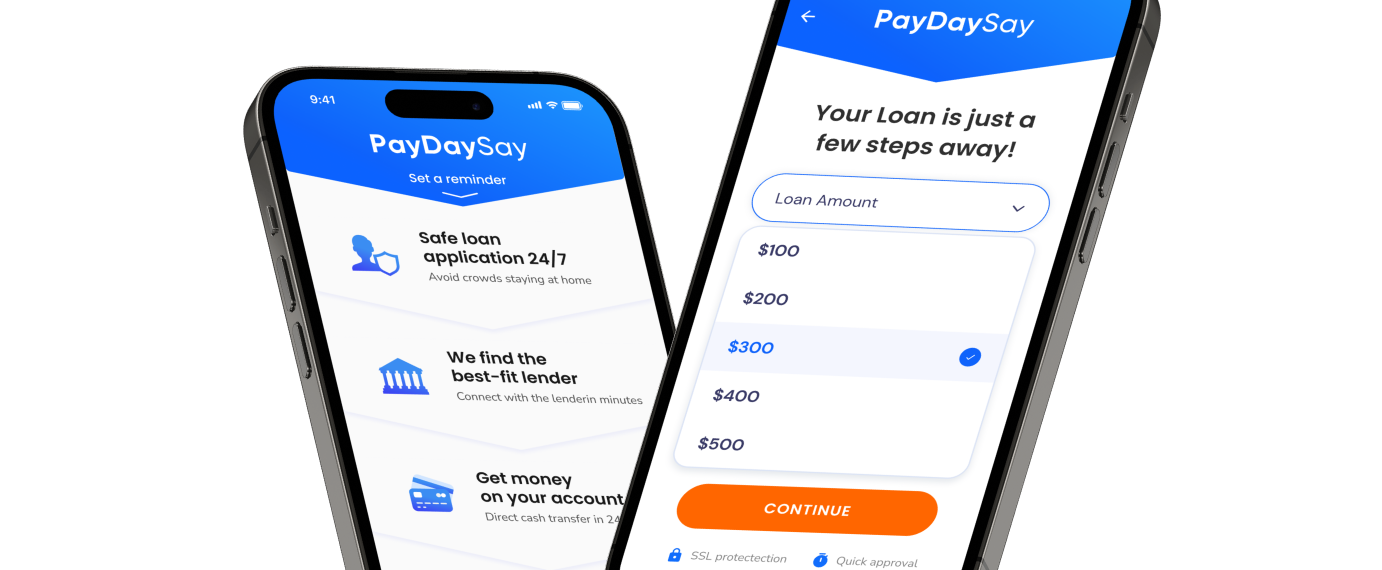Are you a student preparing to go to college anytime soon? You must be looking to take a student loan to help support your college studies.
It is an important step to attaining your professional and educational goals. Student loans pay for your tuition fees, books, housing, transportation, and miscellaneous expenses – all possible to get with a credit card.
Applying for student loans can, however, understanding process for some. Understanding the requirements and having proper guidance make the application process more effortless. In addition to student loans, using a fast loan app can provide immediate financial assistance when unexpected expenses arise.
Any loan you take out should also be well thought out. You need to examine every aspect, including interest rates, payment terms, and conditions.
This quick guide covers everything you need to know about taking out a student loan. Learn the types of student loans available, the steps in applying for a student loan, and many more.
Step 1. Understand How Much You Need For The Study
The first crucial step in applying for a student loan is understanding how much you need for your studies. Having an idea of the estimated costs will help you decide how much money to borrow or what type of loan to apply for.
How do you know how much loan you need? Create a budget list of possible expenses to get an estimate of the total cost.
The list should include the estimated expenses of the following:
- Tuition fees
- The total cost of books
- Housing (room and boarding)
- Daily meals
- Transportation costs
- Miscellaneous fees
- Emergency fund
After creating a budget list, you can find other ways to further reduce the loan amount further. You can reduce the loan amount by seeking financial aid such as scholarships and grants not to take a student loan.
Alternatively, you can also work part-time at the school or other employers. Keep in mind it is important to borrow a realistic amount and just enough to cover your education.
Step 2. Decide On The Student Loan Type
Now that you know how much loan to apply for, you can decide on the student loan type. There are two types of student loans: federal student loans and private student loans.
Generally, federal student loans are government funded. On the other hand, private student loans are from banks and financial institutions which can issue credit card. The decision depends on your credit history, loan requirements, and debt interest rates.
You should first learn about the offers and benefits of both types of loans to decide which type to apply for to take a student loan. Here is a brief comparison of federal student loans and private student loans money.
Federal Student Loans
The federal government is the one that offers a federal student loan. Therefore, a federal student loan is usually the first choice for many students. It is a preferred loan since it has more paying benefits than private student loans.
Moreover, a credit history checker is not part of the eligibility requirements. You also do not need a co-signer to get approved.
There are four types of Direct Loans under the federal student loan program.
- Direct Subsidized Loans
- Direct Unsubsidized Loans
- Direct PLUS Loans
- Direct Consolidation Loans
Undergraduate, graduate and professional students should apply for the most appropriate type of Direct Loan. It depends on the needs and eligibility to take a student loan.
What are the benefits of federal student loans? Federal student loans have the following benefits:
- Fixed and lower interest rates
- No credit check or a cosigner needed
- Credit repayment can start after finishing college
- The government can pay the interest for eligible students
- Flexible credit repayment options and plans
Private Student Loans
Private student loans are nonfederal loans. Unlike federal student loans, private student loans require a credit check or a consigner to take a student loan.
If you can’t get a federal student loan, a private student loan is an excellent alternative take a student loan. Those with an established credit history can apply for private student loan money. This type of loan offers tax benefits, postponement options, and repayment plans.
Here are the benefits of private student loans:
- Variable or fixed credit interest rates
- Debt interest may be tax deductible
- Options for postponement or lowering payments
- Options for credit prepayment plans
- Offers for Loan forgiveness programs
- Offer a credit card

Step 3. Compare Lenders And Choose The Best
After deciding on the type of student loan, choose which lender is best to apply for a loan. Banks, the government, credit unions, and financial institutions are lenders providing student loans.
Choosing the best debt lender requires comparing each lender’s money credit benefits and offers. This third step in taking out student loans significantly impacts the loan conditions. It can affect the interest rate, payment options, and other fees.
Consider the following factors when comparing lenders:
- Interest Rates:
Go with lenders with fixed interest rates rather than variable interest rates. Variable credit interest rates tend to change or increase in the next months or years.
- Repayment Terms:
Compare the monthly debt payments, loan length, and other credit repayment options and plans if you plan to take a student loan.
- Loan Forgiveness and Repayment Options:
Some private lenders do not offer loan forgiveness programs. Check if the lender has options for loan forgiveness or repayment assistance programs.
- Fees:
Choose a lender with lower fees for late payments, penalties, credit card service and origination fees.
Step 4. Apply For Student Loan
You can apply for a student loan after considering the student loan type, amount, and lender. Federal student loans and private student loans have different application processes.
Generally, the application process starts by filling out an application form. Then, you have to wait for the lender to review the application. After approving your student loan application, you will have to accept the credit terms and start your studies.
Here are the steps involved in applying for a federal student loan and a private student loan.
Applying For Federal Student Loans
- Create an account and get an FSA ID, which allows you to access information and be able to sign the FAFSA form online.
- Before completing the FAFSA form, prepare the necessary documents required in the credit form. Some information needed in the form are:
-
- Social Security number
- Parents’ Social Security numbers
- Driver’s license number
- Alien Registration number for non-US citizens
- Tax documents or tax returns
- Records of untaxed income
- Information on cash, such as savings and checking account balances
- Log in at fafsa.gov to apply for money and complete the form.
- Complete and submit the Free Application for Federal Student Aid (FAFSA®) form. If you need help filling out the form, refer to the FAFSA help topics provided.
- Sign and submit the FAFSA form.
- Check the status of your application by logging in to your account. The statuses to expect are processing, processed successfully, missing signatures, or action required.
- Wait for the Student Aid Report (SAR). The SAR is usually given within three days up to three weeks.
- After you have been accepted to a school you listed on your FAFSA form and offered a loan, the school will calculate your paying aid and send you an award letter. An award letter indicates how much financial aid you are eligible for.
Applying For Private Student Loans
- Choose a lender and inquire about their loan application process.
- Review the lender’s terms and conditions.
- Check the lender’s eligibility requirements, including minimum credit score, minimum income, a credit card requirement and an established credit record.
- If you do not meet the minimum credit score requirement, consider using a co-signer with a good credit score. Having a co-signer with the minimum credit score requirement can increase your chances of getting a loan.
- Complete the credit application form provided by the lender. The application form typically asks for information about income, work history, credit history, and details of the co-signer.
- After completing the application, wait for the lender to review and assess your application.
- If the lender approves your application, the lender provides the loan terms and conditions.
- Carefully review and fully understand the terms and conditions.
- Sign the loan agreement if you accept the loan terms and conditions.

Useful Tips For Those Who Take Student Loan
Following the four steps above can help you apply for a loan smoothly. Plus, it gets you one step closer to your academic goals. Aside from the four steps, use these valuable tips to guide you further throughout the credit process.
Take advantage of these tips to make taking out a loan stress-free.
Borrow Only If You Need
You shouldn’t continue with the loan process if you don’t really need student loans. If you have the means to pay for your education or other people who can help, it is still a better option than being in debt. Moreover, it is best to avoid unnecessary debt at all costs to maintain financial stability.
Student loan debt can have long-term financial consequences. In addition, borrow only the right credit amount you need. Avoid borrowing more than what you need just because you can.
With that said, you can lessen the risk of affecting your means to buy a house or save up for your retirement plans. Long-term financial stability should be your end goal.
Work If It’s Possible
Working full-time or part-time can help manage school expenses. Moreover, you will have another source of income that can support your education without fully relying on student loans. It will also reduce the amount of student loan you need to borrow.
The lower the loan amount, the more favorable the loan repayment terms can be offered. This means you can get credit with lower interest rates or flexible credit repayment options. Aside from lowering the loan amount, working while studying can build your work history fast.
It can potentially prepare you for life after graduation and help you attain the necessary skills and experiences. You may also find a job quickly since you already have work experience to share with future employers. Plus, you can get a sense of work-life balance if you decide to work while studying.
Follow Instructions While Taking Student Loan
You must follow all instructions and get every requirement needed. Following instructions is crucial since one mistake can lead to loan rejection. Small mistakes can significantly impact your loan application. Some mistakes to watch out for are missing a requirement or spelling errors.
Moreover, failing to follow instructions and incurring mistakes can delay the approval of your loan. Even after getting approved for a loan, you should still follow instructions in terms of repayment. For instance, you should ensure making payments on time to avoid penalties or late fees.
Following instructions and fulfilling the terms of your loan agreement can help you attain a good credit score. Having a positive credit history is essential for your financial life. It can help you qualify for a loan, get a credit card, rent a car, or even get a job.
Read Conditions Carefully
Before signing any contract or agreement, reading and understanding the terms and conditions is a must. The agreement outlines the terms you must fulfill and the borrower’s responsibilities. Therefore, you should understand the loan agreement conditions and accept them and agree with the terms.
You can refuse to sign the agreement if you do not accept the terms and conditions. Carefully read about the interest rate, repayment terms, and fees involved. This helps you avoid surprises and unexpected penalties and fees.
Moreover, it can ultimately help you plan your budget and manage your finances and monthly payments. Aside from the terms and conditions, you will also know your rights as a borrower and what to expect from a lender.
Always Pay On Time
Maintain financial stability, attain a good credit score, and avoid unfavorable consequences by paying your student loan on time. Your credit score is affected when you make late or missed payments. It will affect your credit score and incur penalties and late fees.
Thus, it will increase your student loan debt and make it even more difficult to manage. Once your credit score is damaged, you will find it challenging to buy a house or get a credit card. With that said, staying on track with your payments is important so you can pay your loan in full and on time.
Moreover, you will be able to maintain a good borrower-lender relationship, which can be beneficial if you decide to get another loan. Paying on time also opens doors to more flexible payment terms from lenders.













 on your homescreen
on your homescreen
